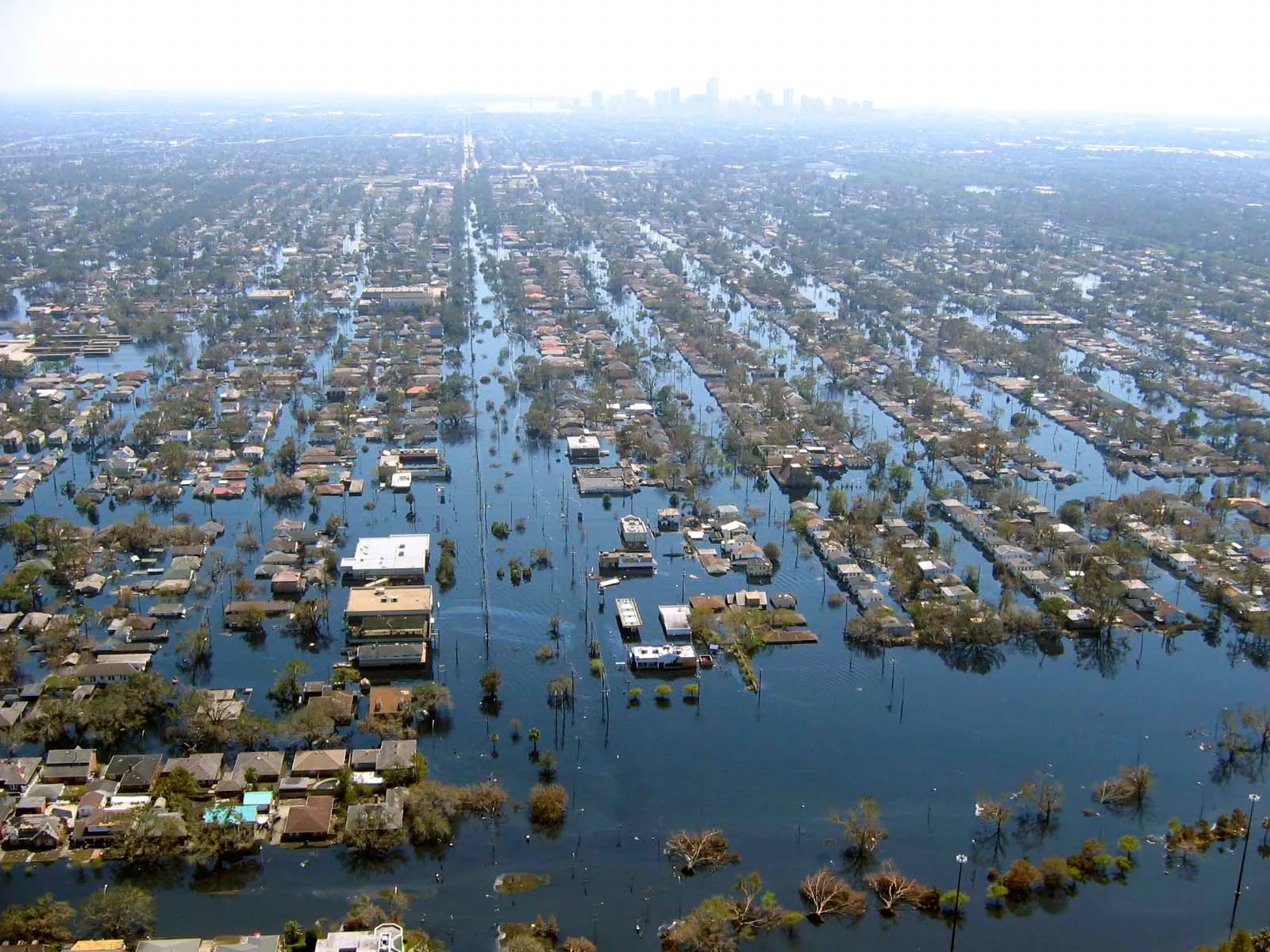

Audio By Carbonatix
A new climate-change study making national headlines all week paints a grim picture of U.S. climate refugees fleeing flooded areas, streaming inland to “burden” places like metro Phoenix.
To which we say: Bring us your tired, sodden masses!
The study by University of Georgia researcher Mathew Hauer published on Monday in the Nature Climate Change journal demonstrates that in about 80 years, Maricopa County could be among the most affected by incoming hordes of American climate migrants.
Hauer created the study for his doctoral dissertation. He starts with climate predictions that show oceans could rise much more rapidly than previously thought – perhaps by about two meters by 2100. Hauer then used computer models to determine the most likely destinations of the soon-to-be water-logged residents from communities in California, Florida, and other vulnerable coastal states.
Most of the expected destinations, naturally, would be near affected areas. In general, Hauer told the Phoenix New Times, the migrants would flock to locations that would “boost their economic capital.”

Mathew Hauer
University of Georgia
The map Hauer made of his data shows the destinations “are all locations that are relatively close to coastal areas, but have really good economies.”
The Austin, Texas, metro area was number one on the list for net in-migration in Hauer’s study, which showed that more than 800,000 new residents might move in. That was followed by metro areas around Orlando, Florida, and Atlanta.
Maricopa County, home to cities including Phoenix, Mesa, and Scottsdale, ranked fairly high at number 13 in net in-migration by 2100.
“For many destinations, such as Riverside, California, Phoenix, Arizona, Las Vegas, Nevada, and Atlanta, Georgia, already experiencing water management and growth management challenges, the SLR migrants who wash across the landscape over the coming century could place undue burden in these places if accommodation strategies are left unplanned,” Hauer wrote in his published report.
In fact, Hauer took his premise too far in the case of Phoenix. While the situation means possible crisis for other locales, it looks like a potentially positive real-estate story for Arizona.
Here’s why:
Hauer’s study shows that the state’s biggest county, which currently has about 4.3 million residents, would pick up only about 100,000 extra people by 2100.
That’s nothing for Phoenix, one of the fastest-growing places in the country.
Population projections show that Maricopa County will likely grow to 5.9 million people, at the low end, and to as many as 7.5 million on the high end.
And that’s just by 2050.
Grady Gammage Jr., a real-estate development attorney who studies growth issues, said it’s “ludicrous” to imagine that adding 100,000 more people to the state by 2100 would be a problem.
The county’s growth has slowed from the pre-Great Recession days, he acknowledged. Now it grows only at about 80,000 new residents a year instead of 100,000.
Strictly from an in-migration standpoint, the climate-change effect would probably boost the economy of Arizona, which has long been driven by growth.
“The most likely sort of migration out of California because of sea-level rise is businesses,” he said, adding that businesses tend to make longer-term plans than most individuals. “That’s good for us.”
Nor would the slight bump in expected newcomers cause undue stress on the environment or water-management issues, he said.
Hauer’s study acknowledges the possible benefits for certain areas, stating that the redistribution of population “could stress some landlocked areas unprepared for these migrations while revitalizing others.”
As he explained to New Times, whether the migration study means good or bad things “depends on where you are coming from. It might be good if you’re a real-estate developer.”
Still, Gammage Jr. said he was “frustrated” to see the suggestion in Hauer’s study that Phoenix is already having severe environmental and water problems.
“We are managing our way through some water issues, but it’s mostly about agriculture,” he said.
Millions of new Maricopa County residents, if they really do come in the next few decades, will require serious decision making. For instance, about 70 percent of the water in Arizona is currently used for agriculture. Some of that would likely be tapped to water new housing communities, but reducing farming would cause its own economic pain.
In the long run, as Gammage Jr. and others have pointed out, the Phoenix area is far more sustainable than commonly believed because of its multiple water sources and desert-minded planning.
If the oceans continue to rise for the next few centuries, according to scientists, Arizona would be in for a truly remarkable change: It would become a coastal state.

A map produced by Hauer’s study shows areas likely to be affected by in- and out-migration spurred by rising sea levels. Darker green means more in-migration; red means extreme out-migration. Maricopa County will be one of the most affected areas, according to the study.
Courtesy of Mathew Hauer